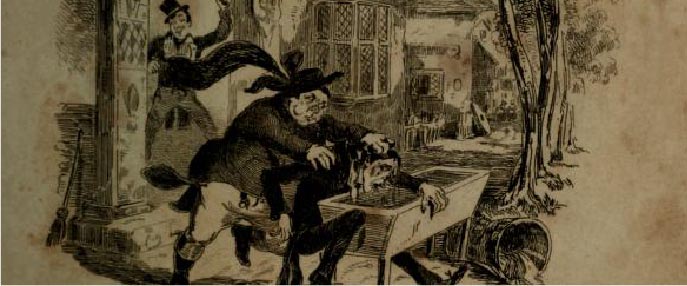
Serialized fiction has experienced a remarkable resurgence in recent years, particularly with the rise of online platforms and e-books. But to truly appreciate its modern popularity, it’s important to explore its origins, evolution, and why readers are drawn to this unique storytelling format.
What is Serialized Fiction?

Serialized fiction refers to stories published in smaller segments, often chapter by chapter, over a period of time. Each installment typically ends on a cliffhanger, leaving readers eager to know what happens next. Serialization allows the writer to deliver a continuous narrative that unfolds gradually, often building suspense and tension with each new episode.
A Brief History of Serialized Fiction

The Early Days: 19th Century Origins
The origins of serialized fiction can be traced back to the 19th century. Before the advent of modern publishing techniques, books were often too expensive for the average person to purchase in their entirety. Serializing stories in newspapers or magazines was a clever way to reach a larger audience. Readers could follow a story over several weeks or months, with each installment providing a new chapter.
Charles Dickens and the Advent of Serialization
One of the most famous early proponents of serialized fiction was Charles Dickens. His novels, including The Pickwick Papers and Oliver Twist, were first published in serial form. This method not only allowed him to build anticipation but also gave him the flexibility to adapt his stories based on the reactions of his readers.
The Growth of Serialized Fiction in Newspapers
Throughout the 19th and early 20th centuries, serialized fiction became a staple of newspaper and magazine publishing. Readers looked forward to the latest installment of popular works, making serialized stories an integral part of popular culture.
Serialized Fiction’s Golden Age

The Rise of Monthly Magazines
In the late 1800s, monthly magazines became a major medium for serialized fiction. Publications like Harper’s Monthly and The Atlantic Monthly featured serialized novels by prominent authors, helping to expand the format’s reach. These magazines became important cultural hubs, where serialized stories could thrive alongside essays, poems, and other forms of literature.
Major Authors and Works in the Serialized Format
Some of the greatest literary works of the 19th century were published in serialized form. Alexandre Dumas’ The Three Musketeers and Leo Tolstoy’s War and Peace are prime examples of how serialized fiction could captivate readers and become timeless classics.
The Impact of Serialization on Literary Culture
Serialized fiction also had a cultural impact. It brought stories directly into the lives of everyday people. For many, the serialized novel became a communal experience—an event readers eagerly anticipated every week or month.
The Decline of Serialized Fiction

Changing Reading Habits
In the mid-20th century, serialized fiction began to decline. The rise of television and the shift towards more instant forms of entertainment reduced the demand for serialized works. Readers also began to prefer complete novels, which allowed them to consume an entire story at once.
The Shift to Complete Novels
With the advent of modern publishing techniques, novels were no longer constrained by the need for serialization. Authors could now publish their works in full, and readers could enjoy an uninterrupted reading experience from start to finish.
The Digital Age and the Revival of Serialized Fiction

Online Platforms and New Opportunities for Authors
The internet has breathed new life into serialized fiction. Platforms like Wattpad, Radish, and Royal Road have given writers the opportunity to publish their stories in installments, often for free or through paid subscriptions. This model has allowed authors to reach audiences who enjoy the thrill of following a story week by week.
The Rise of Web Fiction and Wattpad
Wattpad has become one of the most popular platforms for web fiction. Writers can post chapters of their stories, engage with readers, and even secure publishing deals based on the popularity of their serialized works. This democratization of storytelling has made it easier for new voices to emerge in the literary world.
Social Media’s Influence on Serialization
Social media platforms like Twitter, Instagram, and TikTok have also had a significant influence on the rise of serialized fiction. Authors can now interact directly with their readers, receive instant feedback, and even build communities around their stories.
Why Serialized Fiction Works

The Appeal of Cliffhangers and Suspense
One of the major reasons readers enjoy serialized fiction is the suspense. Each installment leaves readers wanting more, with cliffhangers and unresolved plotlines ensuring that they return for the next chapter. This keeps readers hooked and engaged.
Audience Interaction and Feedback
Serialized fiction allows readers to become part of the creative process. Many modern serialized stories are posted on platforms where readers can leave comments and provide feedback. This creates a dynamic relationship between the writer and the audience, with the possibility for the story to evolve based on reader input.
Building a Loyal Community of Readers
As serialized stories develop over time, they build a loyal following. Readers become invested in the characters and the plot, creating a community that eagerly anticipates each new chapter. This sense of belonging can foster deep connections between readers and authors.
Serialized Fiction vs. Traditional Novels
Comparing the Structure and Format
Serialized fiction typically unfolds in shorter, bite-sized chunks, while traditional novels are longer, complete works. Serialization allows for a more gradual reveal of plot details, which can lead to deeper character development and more intricate world-building.
Pros and Cons of Serialization
The primary benefit of serialized fiction is that it builds suspense and encourages reader engagement. However, it can also pose challenges for writers in terms of maintaining consistency and pacing over time.
The Role of Suspense in Serialization
Suspense plays a crucial role in serialized fiction. The anticipation of what happens next drives readers to continue following the story, making it more addictive and engaging than a complete novel.
Famous Works of Serialized Fiction
Classic Examples (Dickens, Dumas, etc.)
As mentioned earlier, classic authors like Charles Dickens and Alexandre Dumas are iconic figures in the world of serialized fiction. Their works, such as A Tale of Two Cities and The Count of Monte Cristo, captivated audiences over months or even years.
Modern Examples (George R. R. Martin’s ‘A Song of Ice and Fire’)
In modern times, George R. R. Martin’s A Song of Ice and Fire (which inspired the Game of Thrones TV series) is a prime example of serialized fiction achieving global success. Fans eagerly await each new installment, and the series’ delayed publications only heighten the excitement.
How Authors Benefit from Serialization
Flexibility and Experimentation in Storytelling
Serialized fiction gives authors the freedom to experiment with different plot lines, characters, and settings. Since each installment is released gradually, authors have the chance to adjust based on audience reactions.
Building a Fanbase Over Time
As authors continue to release chapters, they build a dedicated fanbase. Readers who connect with the story are likely to spread the word, helping the author gain wider recognition.
Monetizing Serialized Content
Many authors are now monetizing their serialized works through subscriptions, crowdfunding, and even offering premium content for paying readers. This model has allowed many independent authors to make a living from their writing.
The Role of Readers in Shaping Serialized Fiction
Feedback, Suggestions, and Influence
In the world of serialized fiction, readers often have a direct influence on the story. They can leave feedback, offer suggestions, and even impact the direction of the plot. This interactivity helps to create a more personalized reading experience.
The ‘Fan Culture’ and Its Impact on the Story
Serialized fiction fosters a unique fan culture, where readers actively discuss theories, share fan art, and speculate about future plot developments. This sense of involvement can make the reading experience more immersive.
The Challenges of Writing Serialized Fiction
Maintaining Consistency in Plot and Characterization
One of the biggest challenges of serialized fiction is maintaining consistency in the plot and characters over time. Writers must ensure that the story remains cohesive and that character development doesn’t feel disjointed between installments.
Balancing Cliffhangers with Story Development
Writers must strike a balance between creating suspense with cliffhangers and ensuring that each installment contributes meaningfully to the overall plot. A constant string of cliffhangers without proper development can frustrate readers.
Future of Serialized Fiction
The Continued Growth of Digital Platforms
With the rise of digital platforms like Wattpad, Radish, and others, the future of serialized fiction looks promising. Authors can reach larger audiences, and readers can enjoy a constant stream of content.
New Formats and Technologies in Serialization
Emerging technologies like audio fiction and interactive storytelling could further transform the serialized format, offering new ways for readers to engage with stories.
Conclusion
Serialized fiction has come a long way since its humble beginnings in the 19th century. Today, it remains a popular and viable format, offering authors and readers a unique way to experience storytelling. With the rise of digital platforms and audience-driven feedback, serialized fiction is poised to continue thriving in the years to come.
FAQs
1. What is the difference between serialized fiction and regular novels?
Serialized fiction is released in installments over time, often leaving readers on cliffhangers, while regular novels are published in full, allowing readers to consume the entire story at once.
2. Why do people enjoy serialized fiction?
Serialized fiction builds anticipation with cliffhangers, and it allows readers to interact with authors and influence the story as it unfolds.
3. How has the internet influenced serialized fiction?
The internet has made serialized fiction more accessible, with platforms like Wattpad allowing authors to publish stories and engage with readers in real-time.
4. Can serialized fiction be profitable?
Yes, many authors make money from serialized fiction through subscriptions, crowdfunding, and selling premium content to dedicated readers.
5. What challenges do authors face when writing serialized fiction?
Authors must maintain consistency in character development, pacing, and plot progression, while balancing suspense with meaningful story development.
